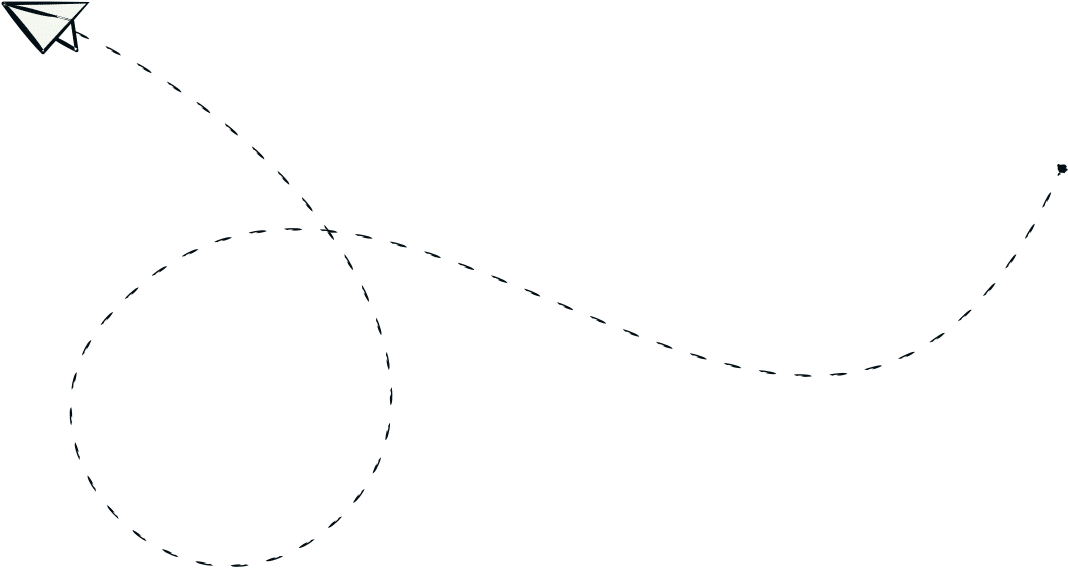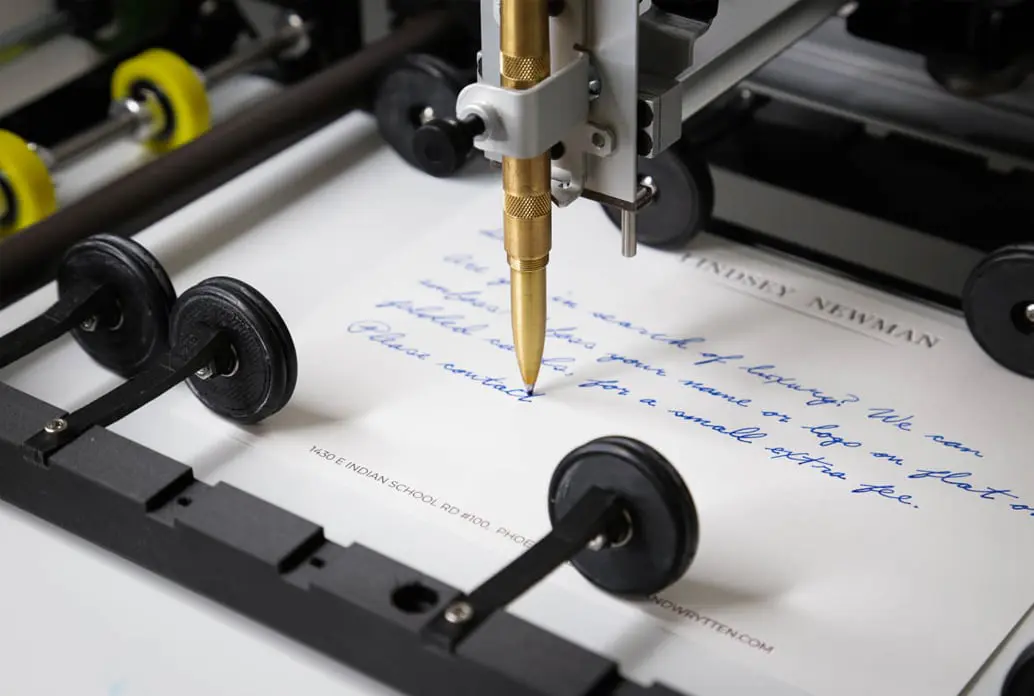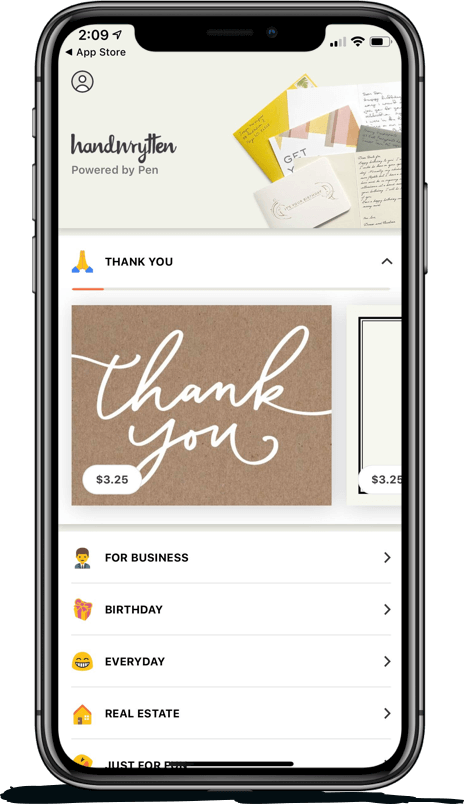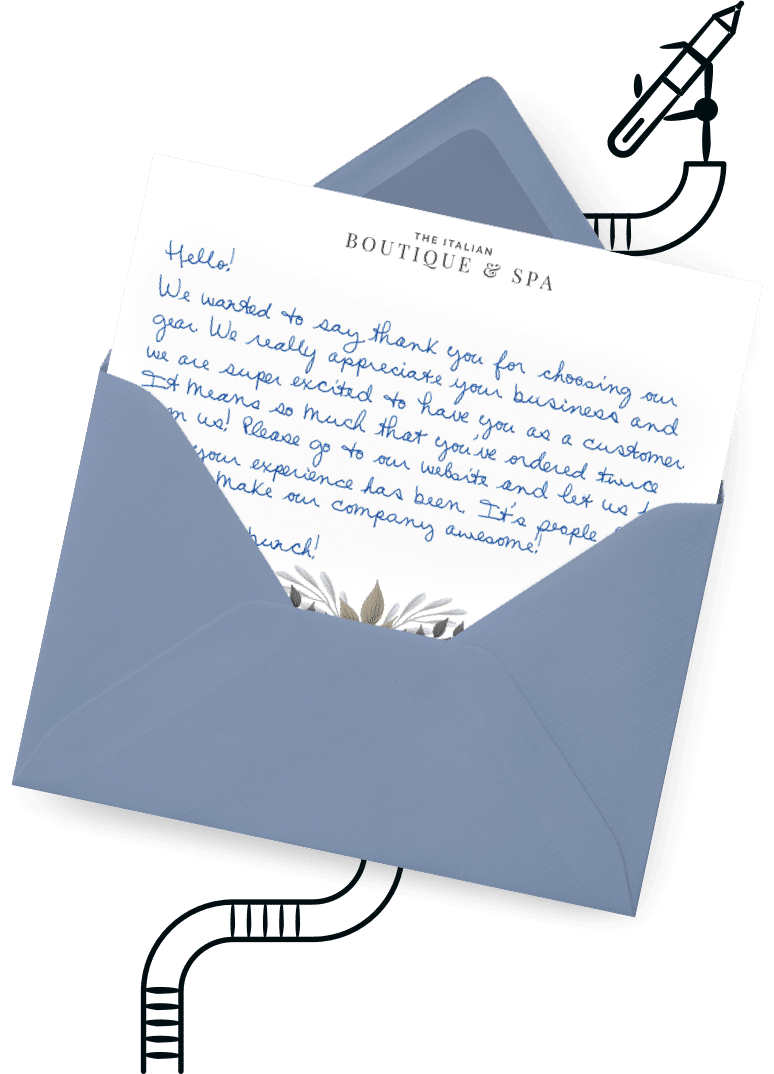
9280 S. Kyrene Rd.
Suite 134
Tempe, AZ 85284
Phone: +1 (888) 284-5197
Email: contact@handwrytten.com



You have been subscribed. Thank you!
Philanthropy is the lifeblood of nonprofit organizations. Keeping the relationship between your nonprofit and those who make contributions through donor outreach is an essential part of nonprofit marketing.
Staying on top of donor outreach can be a challenge, though. Especially for smaller nonprofits with limited resources and staffing. After all, nonprofit founders have a passion for helping people, but not always for marketing. So, keep reading for ten ways to help your fundraising efforts.
Outreach is vital to nonprofit organizations’ survival. Without it, a nonprofit organization may struggle to stay on the minds of its supporters, leading to contributions dwindling. It can encompass communications that reach potential donors to notes of gratitude for pledges and gifts.
You can practice donor outreach by making social media posts thanking businesses and organizations for their contributions, sending out email newsletters, or making personal hand-written notes of gratitude. A fundraising strategy keeps donors informed about the organization’s work and progress, promotes donor engagement, and makes them feel acknowledged, appreciated, and integral to the work.
Organization and nonprofit marketing may seem daunting, but building donor relationships is crucial. This list features multiple options to aid your fundraising strategy to help you keep up with your donor outreach efforts, resulting in more contributions toward your cause.
One of the best ways nonprofits can stay on top of prospective donors is by choosing customer relations management tool, or CRM. This software will give you access to the organization, analytics, and automation that will help nonprofit managers stay up to date on donor outreach. The right software will help you retain and store data on existing donors and organize leads on potential donors. In particular, you’ll be able to organize your donor data, analytics, and time.
The right CRM system will enable you to spend less time on donor outreach but get greater results from the time you spend. That will increase contributions, identify a major donor prospect, and let you spend more time on other functions of nonprofit marketing and operations.
Nonprofits not on social media are missing out on a low-cost form of nonprofit marketing and engagement with existing and prospective donors. Facebook has more than 2.9 billion users around the world, many of whom have the potential to be big donors to your cause.
What’s more, advertising on social media platforms such as Facebook and Instagram is cost-effective. Social media can increase leads, announce fundraising events, and boost nonprofit brand recognition.
For most demographic groups, social media is a regular part of the day. Nonprofits can tap into this by posting photographs, videos, and stories promoting campaigns and events that include links bringing viewers back to the nonprofits’ websites, which will boost search engine rankings. Additionally, nonprofits can utilize social media to recognize major donors, thank them for their contributions, and identify/connect with new ones.
Keeping your donors informed on the latest news at your nonprofit will make them more likely to make contributions regularly. Stories and updates about how your organization is helping people can make donors proud of the difference their generosity is making in the world.
Future contributions are more likely to contribute when they see donor recognition. Nonprofits can tap into this by creating e-newsletters through platforms such as Constant Contact and MyEmma.
Templates can make attractive email newsletter design simple, and you’ll be able to get analytics on open rates and click-throughs to your nonprofit’s website. Those organic website visits will boost nonprofits’ search engine rankings, which could draw in more potential donors.
Some donors are little less tech-savvy and a little more traditional, meaning they may like to receive updates from their favorite nonprofits in print. Mailing a print newsletter every quarter will keep your nonprofit fresh in the minds of contributors while also nurturing donor relationships. A bonus of print newsletters is that they can have a longer shelf life than an email newsletter, which can easily be overlooked instantly. Printed newsletters may be pinned to a bulletin board or shared with others.
Getting a newsletter may jog a donor’s memory and encourage them to make consistent contributions. This makes print newsletters an essential part of nonprofit marketing for donor retention.
The old-fashioned elegance of a handwritten and heartfelt note is a memorable way to build stronger donor relationships. Donors who receive a handwritten note thanking them for their donations may be more likely to make future contributions, or more consistent ones. After all, a thoughtful letter written in pen and ink will make donors feel appreciated and special with your personal touch. This is exactly what our handwritten notes nonprofits offers!
If you’re already thinking you will have writer’s cramp from this donor outreach idea, do not worry! Handwrytten exists to take this task out of your hands. We make incorporating handwritten cards into your donation process straightforward, scalable, and effective.
Social media has simplified celebrating birthdays and anniversaries since many people note them on Facebook and Instagram. Remembering donors and leads with cards on their birthdays or wedding anniversaries will help show appreciation for them, and in turn, will promote donor retention and encourage them to contribute more.
Writing cards remembering donors’ birthdays and other special days can be done with a few keystrokes, thanks to Handwrytten! Your thoughts will be neatly and eloquently conveyed in pen and ink through Handwrytten’s custom-designed writing robots, allowing nonprofits to make personal donor outreach scalable.
Donors who get to visit the nonprofits they help will form connections with those organizations. Tours of an animal rescue nonprofit that include visits with puppies and kittens, for example, would touch a donor’s heart and make them more committed to making contributions. Likewise, donors who support children’s healthcare nonprofits could meet families whose children have benefited from their contributions.
Personal experiences such as hearing from retirees who benefit from a senior center, reading stories to children at a library, harvesting vegetables in a community garden, or handing bags of food to pantry recipients have the potential to inspire donors to continue making contributions. With these experiences, you give those who help you another opportunity to meet those who are being supported and helped by their kindness.
Give potential donors all the information they need in one neat packet. Fill a folder with a printed newsletter, a brochure with photos of your nonprofit at work, testimonials of those your nonprofit has helped, and a handwritten note from your nonprofit’s executive director.
You can personalize those handwritten notes through Handwrytten. Those who are new to making contributions will learn why their gifts are important.
Nonprofits can mail these informational donor outreach packets, hand them out at public events, or ask their board members to personally deliver them to friends and colleagues. Preparing this donor outreach will take time, but the results will increase donors and contributions.
Nothing will make a donor feel more connected to your nonprofit than to become a volunteer. Giving people a chance to make contributions that are not monetary cultivates donor relationships with staff and those helped by nonprofits. Donors will feel even more motivated to make contributions when they see nonprofits’ needs and the work they do firsthand.
One way to invite financial supporters to become volunteers is to send them a handwritten invitation to join a donor workday or visit. Send as many you want—Handwrytten makes it easy and affordable to add this personal touch to nonprofit donor outreach.
The end of the calendar year is a time when donors may want to make last-minute contributions to nonprofits to lock in extra tax benefits. With that in mind, consider publishing an annual report as part of your donor outreach strategy. It can note crucial donor data as well as what your nonprofit did in the past year. Donor outreach involving an annual report during the holiday season may result in higher end-of-the-year contributions.
You could even include a handwritten note to each donor in a holiday mailing to wish them well in the new year. This donor outreach will remind nonprofits’ supporters of the work done during the past year and how they can benefit by making year-end contributions. Donors and leads for potential donors will appreciate personal messages, which you can automate through Handwrytten.
Nonprofits get their start from those who have a passion for a cause. But no matter how passionate you are, donor outreach and nonprofit marketing are essential to keeping nonprofits operational and growing.
The good news is that there are tools and strategies available to build strong, personal connections between nonprofits and their donors. Whether through memorable experiences or just receiving a personal, handwritten card, donors who feel a greater connection to the nonprofits they support tend to make contributions more often and in greater amounts.


Scale your handwritten outreach, creating positive impressions and long lasting bond.
Sign Up Today!


Over 100 designs to choose from or design your own. Our online card customizer makes it simple.
Check Out Our Cards!





